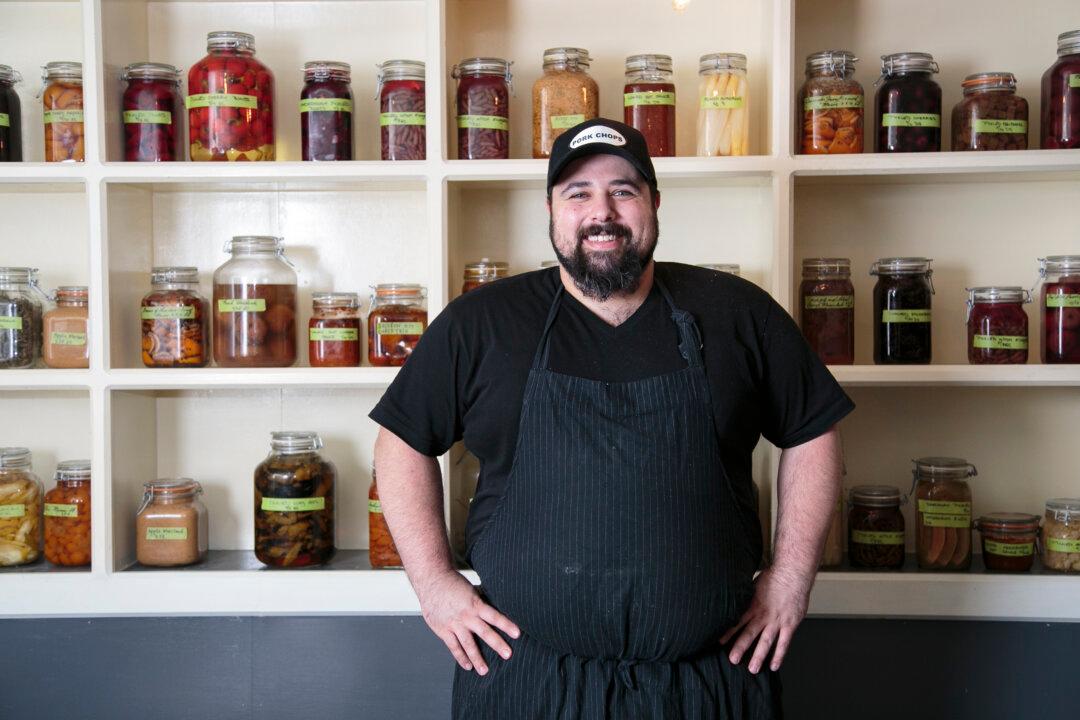It’s time to feed Stu. He’s been waiting all day even though, by all appearances, he looks stuffed to the brim already.
Still he'll eat anything and everything he’s given, from tilefish head bigger than your own to shrimp shells.
Stu is a stew. A perpetual stew.
Chef Dave Santos from the West Village restaurant Louro created it as a way to make the most of leftover trimmings.
“Stu has been working hard since August,” Santos said. He corrected himself and chuckled, “Or working very gently,” Santos chuckled. It’s only taken off the heat to be strained every two days (or as sous chef Emily Chapman puts it, “It’s really rare that you see Stu naked.”).
It not only feeds Louro’s staff every day, who Santos says hasn’t gotten sick all year, but also offers a rich, flavorful base for anything from garlic soup to ramen, to lobster chawanmushi (a Japanese egg custard).






